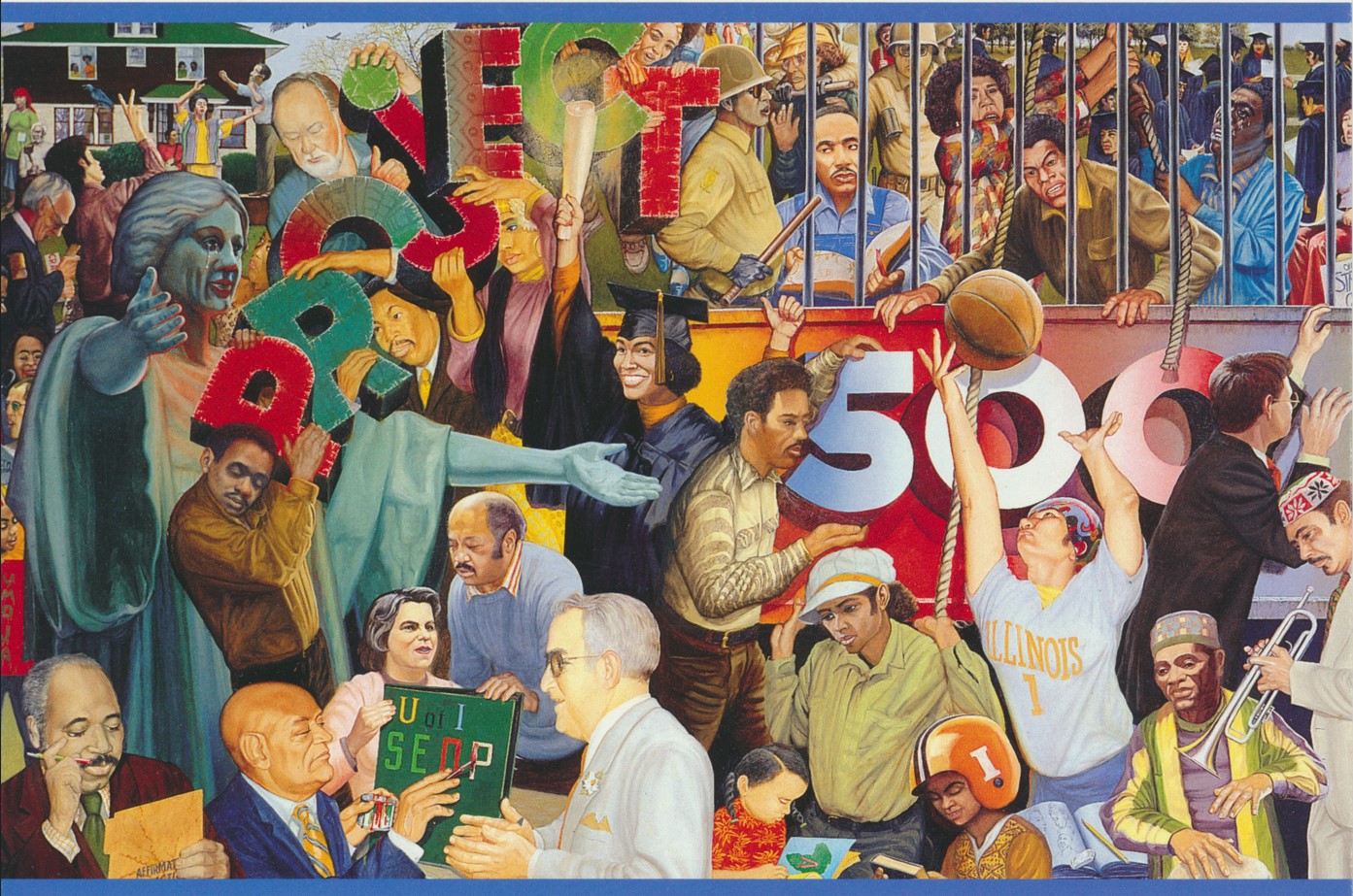Special Educational Opportunities Program (also known as Project 500)
The Special Educational Opportunities Program, commonly referred to as Project 500, was designed by the University of Illinois in 1968 to ensure equality of educational access and opportunities for all students, including those from underrepresented or disadvantaged communities. In 1967, fewer than 400 of the university’s approximately 30,400 students were Black. The program was the University’s response to demands from students and community residents, led by the Black Students Association and fueled by the community’s response to the assassination of the Rev. Martin Luther King Jr., to recruit and enroll more Black students. The first Project 500 cohort in 1968 had 565 students, most of whom were Black, though some Hispanic and Native American students also enrolled in the program.
By that fall, numerous Project 500 students learned that they would not receive the financial aid or housing amenities promised to them by recruiters. Many were assigned to substandard housing, or they were not assigned to a dormitory at all. In response, hundreds of students gathered for a sit-in at the student union on September 9, 1968, requesting a meeting with Chancellor Peltason. By the early morning of September 10th the administration sent in campus police to peaceably remove the approximately 233 African American students.
The protest forced the university to concede to some of the students’ demands and led to the creation of new resources for underrepresented students, including the Department of African American Studies, the African American Cultural Center and the Black Chorus. These achievements paved the way for the establishment of other departments, centers, and initiatives to meet the needs of the University’s diverse students and employees.
The Bruce D. Nesbitt African American Cultural Center, located at 1212 W. Nevada Street in Urbana, Illinois, continues to carry on the legacy of Project 500 by providing programs and services that assist with the cultural, personal, and professional development of students at the University.
This trail stop is sponsored by:
For additional information on Project 500’s origins, influence, and legacy, see the University of Illinois websites below:
- University of Illinois Archives. “Project 500 Exhibits.” https://project500.omeka.net/exhibits/show/bpi
- University of Illinois Library. “Voices of Illinois Oral History Portal – Project 500.” https://www.library.illinois.edu/voices/collections-old/project-500/
Decade:
1960-1969
Location(s):
- University of Illinois, Illinois
Additional University of Illinois Trail Sites



